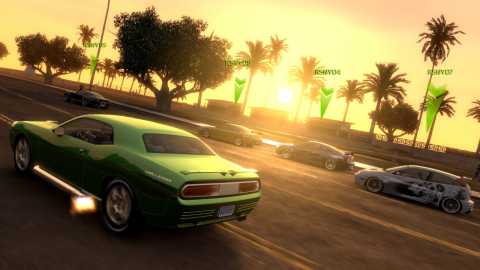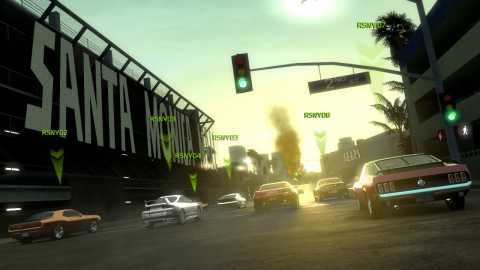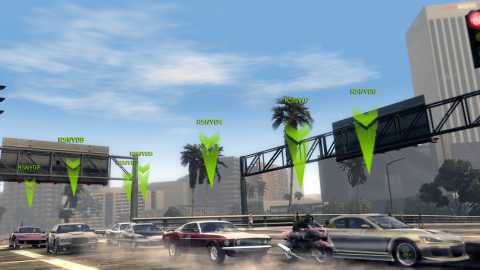Midnight Club: Los Angeles Review

Midnight Club: LA puts you in the role of an anonymous East Coast transplant whose only apparent interest is street racing. You'll meet plenty of colorful and often obnoxious characters as your reputation improves, but the game keeps it pretty light with the story stuff, so don't expect a crazy crime epic about dirty undercover cops and counterfeit krugerrands or anything like that. Instead, it's more of a street racing procedural with a focus on methodically working your way up in the scene.
Your character is a bit of a blank slate, but the real star here is the city of Los Angeles. Midnight Club doesn't attempt to map LA block-by-block a la True Crime: Streets of LA, but the general layout--which includes Santa Monica, Century City, Westwood, Hollywood Hills, Beverly Hills, Hollywood, and the downtown area--is quite accurate, and the game features enough real landmarks to capture the feel of the city without being too romantic about it. And not just obvious stuff like the Hollywood sign or the Capitol Records building either, though those are in there too, but also Carney's Restaurant, Pink's Hot Dogs, the Standard Hotel, the Saddle Ranch, the Viper Room, Ripley's Believe it Or Not, and the Third Street Promenade in Santa Monica, just to name a few.
The actual driving in Midnight Club is fast and loose, though it's also got some weight to it, something that's accentuated by the game's intense, borderline nauseating camera rattle and a default camera angle that really kicks out around corners. The game features some 43 licensed cars, as well as a few motorcycles. Most importantly, it's not all just late-model supercars, though there are a few of those, and everything features a driving profile that exaggerates that vehicle's strengths and weaknesses. There's plenty of car customization, both performance-based and aesthetic, though there's nothing here that hasn't been seen in other street racers.
Drafting is a big deal in Midnight Club: LA, and if you hang out in another racer's slipstream for a few seconds, you'll earn a quick nitrous-style boost. In probably the game's most ridiculous turn, you can pop your car up on two wheels, which is useful for avoiding scrapes and for keeping other racers from drafting behind you. Actually, more ridiculous than that are the unlockable special abilities, which include the ability to slow down time or use an electromagnetic pulse to disable competitors.
Like past Midnight Clubs, the game doesn't limit where you can drive during a race, though most races are littered with enough mandatory checkpoints that there are usually only a few feasible routes for any given race. You can't always see the next checkpoint from the last one, and the game never shows you more than two checkpoints at a time, requiring you to constantly check against the on-screen minimap to figure out where to turn next. 
Series races can be even worse, since they're often based on the first racer to win three races. With five racers in the mix, that means you can run 10 races, each of which can potentially run a good five or six minutes, before finally losing and having to do the whole thing over again. You still earn a little bit of money and rep for crossing the finish line even when you lose a race, but it's still a consistently goddamn infuriating experience.
Luckily, there's a nicely integrated 16-player online component that eliminates both the AI and traffic issues. The online cruise mode essentially turns the entire city into a giant lobby where players can queue up different events, kind of like Burnout Paradise, but more democratic. Here you can compete in standard races, a number of different free-for-all and team-based capture-the-flag variants, unordered races, and more.
I really enjoy the look and feel of Midnight Club: Los Angeles, and there's a good amount of content here, but the severe difficulty level makes it all much harder to appreciate. It's punishing, but if you're up for it, there are some sights worth seeing here.
